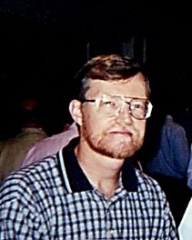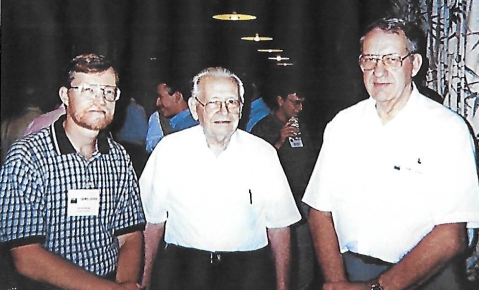Fond Memories of the Master of Masters – Karl Norris
Contribution by Dave Ryan
David J. Ryan,
Principle Scientist – DuPont Nutrition & Biosciences

It is with significant sadness that IDRC 2020 has been canceled. This meeting has always been a highlight of my career, and doubly so as we will not again in this lifetime be graced to listen to the Master of Masters, Karl Norris, address the conference attendees at Wilson College Science auditorium and impart his wisdom. His presentations and understanding of the subject matter rose above the insights of most, and always provided unique perspectives that no one else had. His interpretations of the IDRC Shoot Out Data was second to none. His presentation of the Shootout dataset was always last, like one might experience at Christmas time, by saving the best gifts to open at the end.
I am profoundly grateful to be involved with NIR and Diffuse Reflection at a time of exponential growth in the field that generated tremendous excitement and career opportunities. There are only a few individuals that have impacted my career so profoundly. One is John Shenk and the other is Karl Norris. I can humbly say that any success I may have achieved over the years is no small part to being able to stand on the shoulders of giants. Apart from the excellence in science and engineering, and even more important, was his humility and friendliness to all. He took the time to spend with you to address any questions that you may have. I considered him a personal friend, but all one had to do to achieve this status was to meet him and talk to him once. He would always greet you with a smile on his face.
Even in later years his passion and drive were simply amazing. His interpretation of NIR spectra was second to none. I can only imagine how many hours he must have spent studying and learning NIR spectral bands. 2nd derivatives were his preferred math treatment. While others relied on more sophisticated chemometrics, he relied on visual analysis. Increasing concentrations were in in the negative direction for Log I/R NIR Absorbance spectra and allowed band assignments to match literature assignments. His favorite algorithm was his touted 2nd derivative ratio division math algorithm followed by MLR. He would find spectral nodes near the constituent band of interest that did not change. This would represent the denominator. The band that represented the signal would be in the numerator. The second derivative involved a gap, with smoothing. All this had to be optimized from many iterations.
The last version has been coded in Matlab on which David Hopkins and Karl collaborated. This is open source code available to anyone who is brave enough to learn. This has been well documented by David Hopkins, Vol. 27, No.7, October 2016, NIR News. My only attempt at using this was from early versions found in NSAS. I learned quickly that to fully take advantage of its capability took some mastery that I did not have the time to develop. His latest efforts focused on the interpretation and modeling using 4th derivatives, which to my knowledge no one has successfully implemented in any robust applications.
He was also a master at understanding the physics of light and instrument design stemming from his electronics background, which was also put to good use by him while serving our county in World War II. He understood weaknesses in instrument design, and as a result, avoided regions of the spectra that would add noise, anomalies, and non-linearities. Using all of his understanding, he was at times able to create models that had the robustness to be able predict accurately beyond the modeling range. During one NIR meeting we were having a conversation around a published article that described a number of sophisticated chemometric approaches. He had access to the dataset and using his magic was able to obtain correlations better than was documented in the publication, but his humility never allowed him to tout this in a public way.
Personally, I sought his expertise on a problem I had in working with the Foss Beverage analyzer. This unit operated in transmission with a fixed pathlength for a single application but was adjustable for different applications. Fiber optic reflectors were located inside round quartz tubes. Not your typical square fixed pathlength cuvette. As a result, he helped me understand that the spectra produced was a combination of a variety of pathlengths, smallest at the shortest distance and longer at the edges. Being there is an optimum pathlength to maximize S/N, and minimize non-linearity, the spectra, by definition, were always a blend of ideal, and non-ideal, therefore contained significant nonlinearities. Especially samples with different opacities, which we had to deal with, created a whole new set of pathlengths and problems. His advice provided the insight necessary which helped me make the calibration as good as possible, given the limitations.
Without a Karl Norris or a John Shenk, I venture to say I would, and maybe many others, would not be putting this technique to practical day to day use. I would like to thank Phil Williams for giving me the opportunity to say a few words to the IDRC community and best wishes to all. I hope that IDRC 2022 once again is able to bring our IDRC family back together.
The picture below is from IDRC 2000, when we were all much younger. I am on the left. and David Massey is on the right.

There will never be another Karl Norris. He was the best person at the right time to advance the science.
Thanks.
David J. Ryan.



